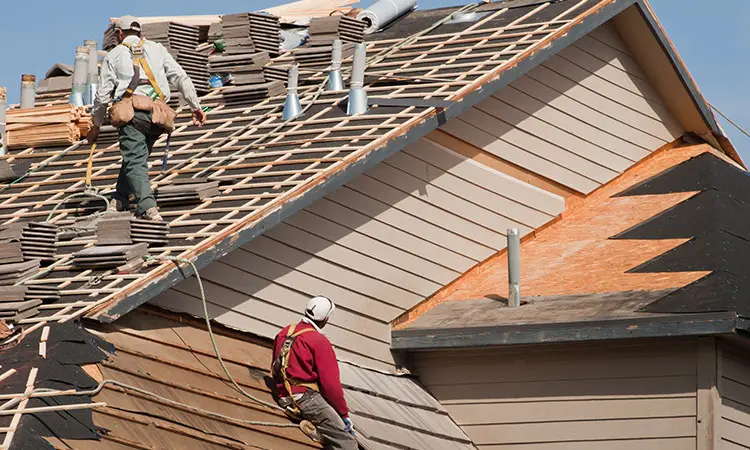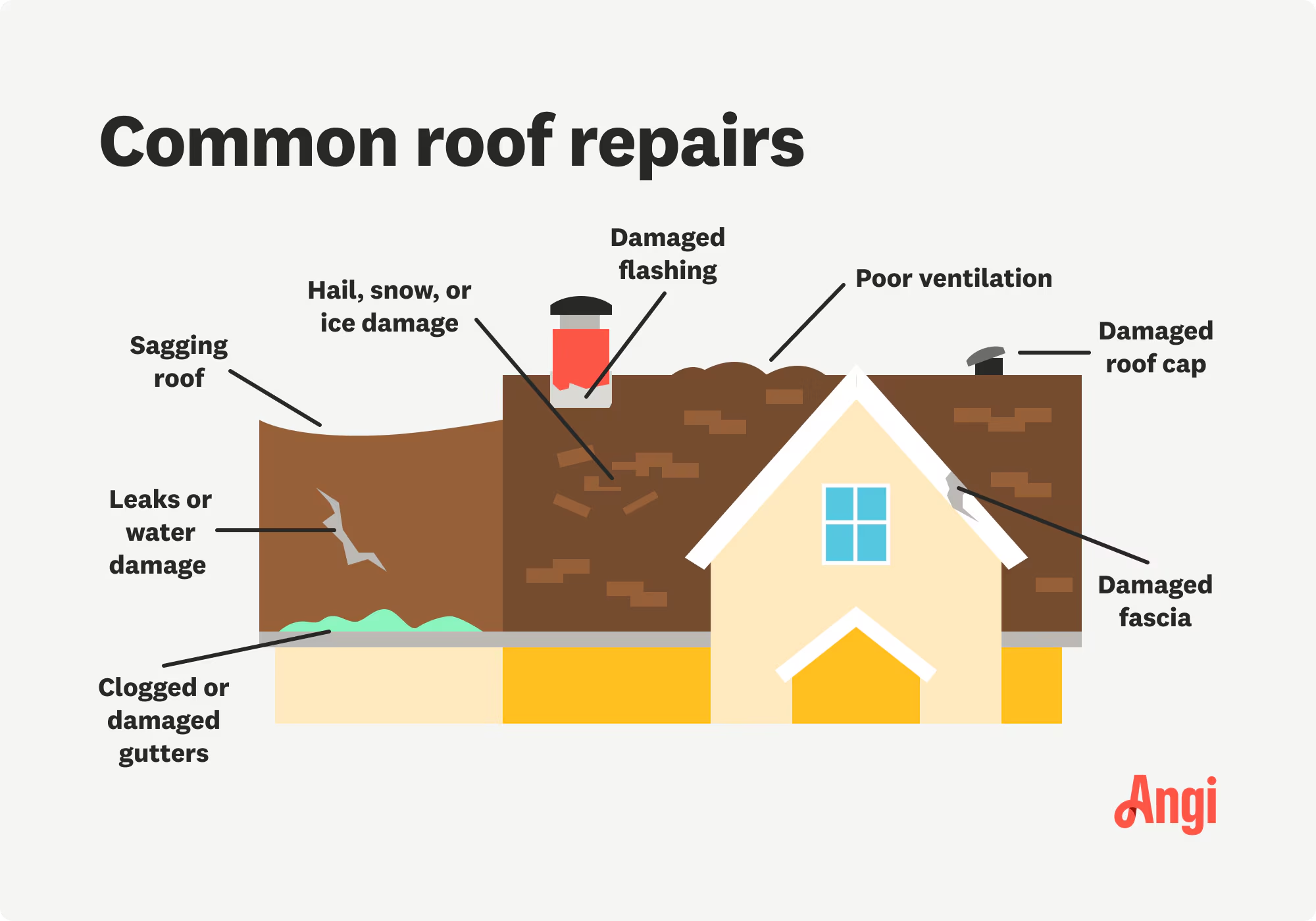Oahu Roofing: Trustworthy Roofing Solutions for Houses and Companies
Oahu Roofing: Trustworthy Roofing Solutions for Houses and Companies
Blog Article
Comprehending the Different Sorts Of Roofings: A Comprehensive Overview for Homeowners
With an array of alternatives-- varying from the typical gable to the modern level-- each type presents special advantages and challenges that ought to line up with the property owner's details requirements and environmental factors to consider. As we discover the complexities of different roofing types, it ends up being evident that one size does not fit all; the right selection might amaze you.
Gable Roofings
Saddleback roofs, defined by their triangular form, are among one of the most preferred roof designs because of their simpleness and effectiveness in losing water and snow. This style features 2 sloping sides that satisfy at a ridge, permitting for reliable water drainage and minimizing the danger of water buildup. The high pitch generally related to saddleback roofs enhances their ability to take care of heavy rainfall, making them appropriate for different climates.
In enhancement to their sensible benefits, gable roof coverings use aesthetic versatility. They can be adjusted to various building designs, from typical to modern homes. The style can likewise fit added functions such as dormer windows, which enhance all-natural light and air flow in the attic room room.
Furthermore, saddleback roofs offer ample room for insulation, adding to energy effectiveness. Homeowners can pick from a variety of roof materials, including asphalt tiles, steel, and floor tiles, further enhancing personalization alternatives.
Despite their benefits, gable roofings may require additional assistance in areas prone to high winds or hefty snowfall. On the whole, the saddleback roof stays a popular option because of its blend of performance, durability, and aesthetic charm.
Flat Roofs
Level roof coverings are commonly identified for their minimal layout and useful applications, particularly in commercial and commercial setups (oahu roofing). These roof coverings include a nearly horizontal or straight surface area, which enables simple building and versatile room usage. While they might do not have the aesthetic charm of pitched roof coverings, level roofings offer various advantages, particularly in city environments where taking full advantage of area is crucial
One of the primary advantages of level roofing systems is their availability. Home owners can utilize the roof covering space for numerous purposes, such as roof gardens, terraces, or solar panel installations. Additionally, flat roofings are normally much more cost-effective to install and keep compared to their sloped equivalents, as they require fewer products and labor.
Nevertheless, flat roof coverings do present specific challenges. Appropriate drainage is vital to prevent water pooling, which can result in leakages and architectural damages. For this reason, choosing premium waterproofing products and regular assessments are vital for making certain durability. Usual products used for flat roofing systems consist of built-up roof (BUR), customized bitumen, and single-ply membrane layers, each offering unique advantages. Overall, flat roofs function as a versatile and practical selection for several house owners and companies alike.
Hip Roofing Systems
Hip roof coverings are defined by their sloped sides that converge at the top, developing a ridge. This style stands out from saddleback roofs, as all 4 sides of a hip roofing incline downwards towards the wall surfaces, giving a much more secure structure. The angle of the inclines can differ, enabling versatility in building aesthetic appeals and functionality.
Among the primary advantages of hip roofings is their capacity to hold up against hefty winds and damaging climate condition. The sloped surfaces enable far better water drainage, decreasing the check that danger of leakages and water damages. In addition, hip roof coverings provide raised attic room space, which can be utilized for storage space or even converted into comfortable locations.
Nevertheless, creating a hip roofing system can be more expensive and intricate than simpler roof covering types, such as saddleback roofs. The additional material and labor associated with producing the slopes and ensuring correct architectural integrity can result in greater expenditures. In spite of these disadvantages, numerous property owners prefer hip roofing systems for their sturdiness, aesthetic appeal, and possibility for power effectiveness.
Mansard Roofings
Mansard roof coverings, frequently recognized by their unique four-sided layout, feature two slopes on each side, with the lower slope being steeper than the top. This building design, stemming from France in the 17th century, is not only visually enticing but functional, as it makes the most of the functional area in the upper floorings of a building. The high lower incline enables even more clearance, making it a perfect selection for loft spaces or attic rooms, which can be exchanged living areas.
Mansard roofings are identified by their convenience, fitting different building styles, from typical to contemporary. They can be created with various materials, consisting of asphalt tiles, slate, or steel, supplying property owners with a series of alternatives to fit their preferences and budgets. Furthermore, the style enables the assimilation of dormer windows, enhancing all-natural light and air flow in the top degrees.
However, it is important to take into consideration the potential downsides. Mansard roof coverings might require more upkeep because of the complexity of their layout, and their steep slopes can be testing for snow and rain runoff. On the whole, mansard roofings incorporate beauty with practicality, making them a popular selection among home owners seeking distinct building features.
Dropped Roofs
As house owners progressively seek simplicity and performance in their building layouts, dropped roofing systems have become a popular choice. Characterized by a single sloping aircraft, a shed roofing presents a minimalist aesthetic that enhances various home designs, from modern to rustic.
One of the main benefits of a shed roof is its straightforward construction, which commonly try this out translates to reduce labor and material prices. This layout permits efficient water drainage, reducing the danger of leakages and water damage. Additionally, the vertical incline offers sufficient area for skylights, enhancing all-natural light within the interior.
Dropped roof coverings also offer versatility in regards to usage. They can be efficiently integrated right into enhancements, garages, or outdoor structures like sheds and structures. Moreover, this roofing system style can fit numerous roofing products, consisting of metal, asphalt tiles, or even eco-friendly roofs, aligning with green efforts.
However, it is vital to think about regional climate problems, as heavy snow lots may demand adjustments to the roof's angle or framework. On the whole, shed roofings provide a practical and visually pleasing alternative for house owners aiming to optimize functionality without jeopardizing design.
Verdict


Gable roofings, identified by their triangular shape, are amongst the most prominent roof styles due to their simpleness and performance in losing water and snow. oahu roofing. The high pitch commonly associated with gable roofing systems boosts their capability to handle hefty rainfall, making them ideal for different environments
While they may do not have the visual appeal of pitched roofs, flat roofing systems use various advantages, specifically in city settings where taking full advantage of area is essential.

Report this page